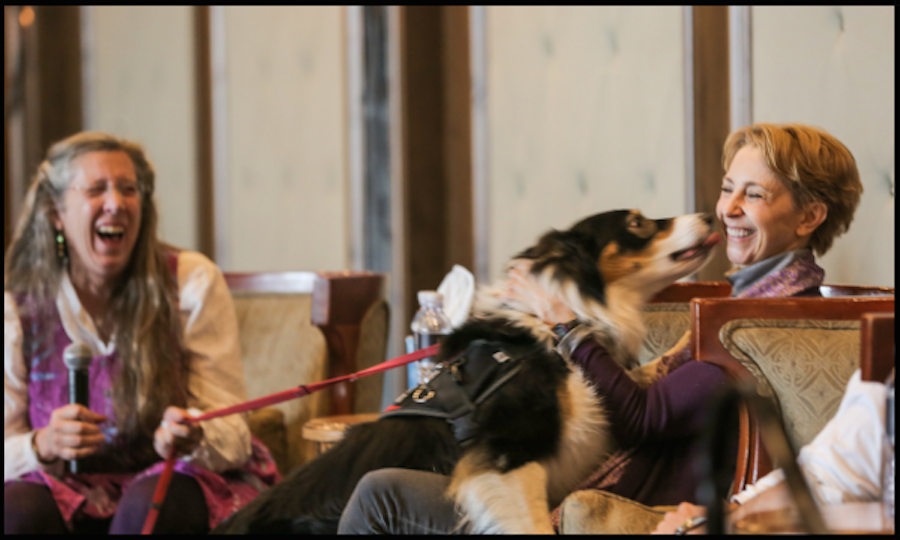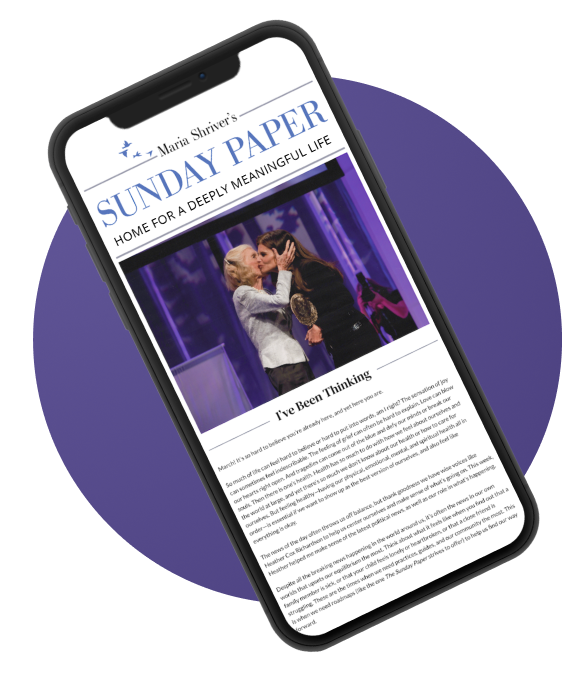Sometimes You Can Find Happiness Right Behind You

Whenever I hear a flight attendant say, “Remember, your nearest exit may be behind you,” I think, “As above, in air travel, so below in ordinary life.”
Most of the time we focus only on what we already believe. Fixated on these ideas, we don’t notice anything that could spark new ways of thinking. Since we evolved to be highly alert to danger and difficulty, we can get stuck staring at them, seeing only what we believe rather than believing what we actually see. This is a recipe for suffering and disaster. But shifting our focus—looking in exactly the opposite direction from our usual perspective—can get us out of dangerous situations in our minds just as it can get us out of dangerous situations in airplanes. Our best exit from suffering may be behind us.
Psychologists know that we don’t really perceive our circumstances; we only perceive what we notice about them. Maybe you’ve seen the study in which people observe a film of six people bouncing a basketball. Researchers ask viewers to count the number of times the ball is bounced. In the middle of the film, a person in a gorilla suit walks into the center of the game, does a little dance, and leaves. The vast majority of people who are busy watching the basketball literally fail to see the gorilla at all.
This phenomenon, called “attentional blindness,” is happening to all of us, all the time. We ignore anything that contradicts what we already believe. If we fixate on depressing or alarming thoughts (which our brains are wired to notice), we see only depressing or alarming things.
The only thing necessary to create a totally different reality is a shift of attention. Even in very dark situations, we can find light and openness—the way out—by looking for evidence that contradicts the painful beliefs in our minds. To really blow the doors off a painful situation, we can look to the exact opposite of our worst fear. That, it turns out, is often the truth that is trying hardest to set us free.
This idea is fundamental to all the work I do with clients, but I’ve never seen it work like it did for a woman I’ll call Janet. She was a participant in a seminar I ran, an event focused on helping participants create joyful lives. Three days into the seminar, Janet was still huddled in her chair, face pinched and miserable.
I asked her to join me on the stage to do some one-on-one work in front of the group. As she walked up, I saw she was accompanied by a beautiful border collie. The dog wore a vest that said, “Please don’t pet me, I’m working.”
Janet explained that she had Multiple Chemical Sensitivity. When she came near certain chemicals, she suffered awful symptoms—nausea, headaches, possibly even seizures and death. Janet’s dog, Topher, was there to sniff the presence of offending chemicals and get Janet the hell away from them.
As she sat down Janet introduced Topher, but he didn’t even glance at me. He stationed himself on the floor by her chair, scanning the room with his eyes (and nose) as intently as any human bodyguard.
Janet explained that she lived in a state of continuous, unbearable anxiety. Her thoughts were dominated by the knowledge that at any moment, an invisible poison could make her sick or kill her. Janet’s attention was fixed on the thought, “Danger and pain are everywhere.”
This belief was certainly justified. Janet had suffered enormously, and her condition made her genuinely vulnerable. My hope was that in the moments when she wasn’t around noxious chemicals, she could begin to release her fear and enjoy life.
First, I nudged Janet toward topics that might shift her attention to something a little less dire than catastrophe. We talked about the fact that although she’d experienced many episodes of illness, there had also been plenty of times when she felt all right. Janet herself, getting into the spirit of things, brought up the fact that teaming up with Topher had made it much easier for her to keep out of harm’s way.
I asked her if she relax into the moment we were sharing, since 1) she wasn’t feeling sick, and 2) Topher was definitely on the job. She softened a bit, so I gently pushed her to try a thought exercise.
“Pretend you’ve had a teeny, tiny, almost unnoticeable stroke,” I said. “It didn’t harm you in any way. All it did was take away your ability to think the thought, ‘Danger and pain are everywhere.’ Imagine that.”
Janet gamely closed her eyes, concentrating. After a moment she began to smile.
At this point, Topher, who’d been lying still as a sphinx, raised his head sharply. He fixed his eyes on Janet’s face, as if it had suddenly turned into a squirrel.
Eyes still closed, Janet drew a deep breath. “Oh, my goodness,” she said. “This feels so much better! I actually think I feel…safe!”
Topher’s tail began to wag. No lie.
“Okay, Janet,” I said, “let’s go for the black-belt level. Remember, the opposite of your worst fear may be the truth that sets you free. So give me the opposite of “Danger and pain are everywhere.”
Janet thought furiously (it’s hard for all of us to verbalize the opposite of our worst fears). After a while, she said, “Well, it might be…um…safety and joy are everywhere?”
“Think about that,” I said. “Look for it.”
Helen gazed around the room at the sunlight streaming through the windows, at a hundred kind faces watching her with compassion and sympathy. Her eyes widened as if she were seeing the place for the first time.
“Oh, my God,” she said, beginning to laugh. “It’s true! Safety and joy are everywhere!”
At this point, Topher completely lost his religion. He leaped into Janet’s lap, wagging his whole body, licking her face, making happy little cooing noises as if to say, “You noticed! You noticed! You noticed all the good things!”
Janet, laughing harder, tried to shush Topher. “I don’t know what’s happening,” she said. “He’s never done this before, not ever.”
She managed to get him out of her lap, but Topher wasn’t finished. He ran to me, jumped up to put his front paws on my shoulders, and began licking my face. For five minutes, right there in front of God and everybody, this highly trained service dog frolicked around the stage like a puppy just out of his crate. He was happiness in a fur suit.
This isn’t the only time I’ve seen animals apparently try to help humans “go sane.” Other creatures don’t live in regret for past mistakes or fear of future catastrophe. They simply are where they are, looking around for what’s happening, instead of focusing on their fantasies about what might be happening. But I’ve never seen an animal more bent on communicating than Topher. He seemed supercharged with delight that Janet had shifted her focus from the threat of harm to the presence of peace.
We all have the capacity to make similar radical shifts. I’m not saying we should ignore the very real dangers and hardships of this world. But we’ll be in a better place to handle difficult situations well if we deliberately contemplate not only our worst fears but their direct opposites.
So, what fears and regrets are dominating your attention, making you feel trapped in misery? Reach for some happier thoughts, and then, with this new attention focus, look for evidence that these new thoughts may be true. Try looking “behind” you, at your painful thought’s direct opposite.
This requires commitment and openness, but if you stick with it, you will find the way out of suffering.
“People are horrible” can become “People are wonderful.”
“So many bad things have happened” can become “So many good things have happened.”
“I’ve been hurt” can become “I’ve been healed.”
Try it yourself. Look for the exit in the last place you’d expect to find it. I can promise you from long experience that this works, but you won’t know it’s true until you feel it. Although, if Topher were here, I bet he could convince you.
This essay was featured in the April 7th edition of The Sunday Paper, Maria Shriver’s free weekly newsletter for people with passion and purpose. To get inspiring and informative content like this piece delivered straight to your inbox each Sunday morning, click here to subscribe.
READ MORE STORIES THAT MOVE HUMANITY FORWARD
READ MORE STORIES THAT MOVE HUMANITY FORWARD
SIGN UP FOR MARIA’S SUNDAY PAPER

